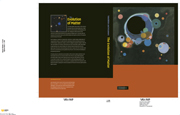Book contents
- Frontmatter
- Contents
- Introduction
- Part I The elements
- Part II Early solar system: nebula formation, evolution and lifetime
- Part III Accretion of the Earth
- 14 Introduction to the planetary system, Earth and Moon
- 15 Introduction to planetary accretion
- 16 Earth accretion: the giant impact(s)
- 17 The post-accretion silicate Earth: comparison with meteorites
- 18 Core segregation
- 19 Heavy “crust” on the top of the core
- 20 The early atmo-hydrosphere
- 21 Light from the Moon …
- Part IV Global evolution of the Earth
- References
- Glossary
- Abbreviations
- Meteorites, rocks and minerals
- Index
21 - Light from the Moon …
Published online by Cambridge University Press: 04 September 2009
- Frontmatter
- Contents
- Introduction
- Part I The elements
- Part II Early solar system: nebula formation, evolution and lifetime
- Part III Accretion of the Earth
- 14 Introduction to the planetary system, Earth and Moon
- 15 Introduction to planetary accretion
- 16 Earth accretion: the giant impact(s)
- 17 The post-accretion silicate Earth: comparison with meteorites
- 18 Core segregation
- 19 Heavy “crust” on the top of the core
- 20 The early atmo-hydrosphere
- 21 Light from the Moon …
- Part IV Global evolution of the Earth
- References
- Glossary
- Abbreviations
- Meteorites, rocks and minerals
- Index
Summary
Introduction
As seen in the preceding chapters, the giant impact fundamentally affected the history of the Earth. This event has been postulated to explain the existence of the Moon, and the parameters for modelling it have been tuned to produce a Moon with the right mass and metal/silicate ratio, and the right angular momentum for the Earth–Moon system.
One of the impressive results of the Luna and Apollo missions is a chronology of the magmatic evolution of the Moon: major planetary-scale differentiation occurred ∼4.45 Gyr, followed by mare basaltic magmatism within ∼ 4.0 to 3.0 Gyr ago. Unlike terrestrial materials, the ancient rocks of the Moon have preserved a record of its very early evolution.
Within the framework of this book, it would have been attractive to exploit this record in order to understand the early history of our planet better. However, from the following sections we shall see that, although the existence of the Moon is essential evidence for the standard model of planetary accretion and although there is an underlying partial similarity of chondrite-like volatile-depleted initial matter to that of the Earth (Section 21.2), the Moon's evolution was fundamentally different from what happened on the early Earth. An exception is the record of frequent impacts on the Moon with a late heavy bombardment lasting up to ∼ 3.8 Gyr ago, which therefore must also have occurred on Earth.
- Type
- Chapter
- Information
- The Evolution of MatterFrom the Big Bang to the Present Day, pp. 267 - 288Publisher: Cambridge University PressPrint publication year: 2008

